
Making neufchatel
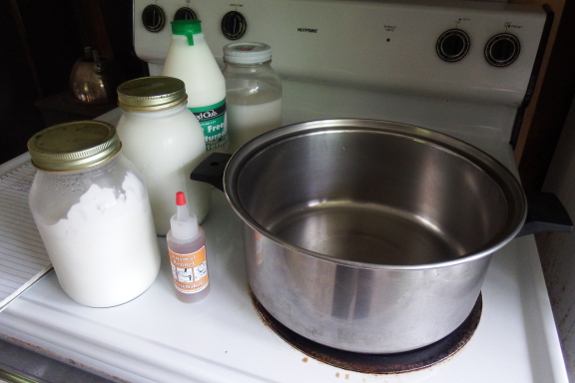
After deciding that our first cheese --- an acid cheese --- was too simple, it was time to move on to a cultured cheese. I followed this recipe for neufchatel, which uses buttermilk as the starter culture and rennet to make the curds separate from the whey.
Rennet, I learned when
hunting down these supplies, comes in several forms --- liquid animal,
liquid vegetable, tablets, and powders. The powders are usually for bulk
purchasers, tablets have a very long shelf life, liquid animal is easy
to utilize in small quantities for fractions of the recipe, and liquid
vegetable (as best I can tell) is a slightly bitter replica used by
vegetarians. Since I wanted to be able to try half recipes, I opted for this liquid animal rennet.
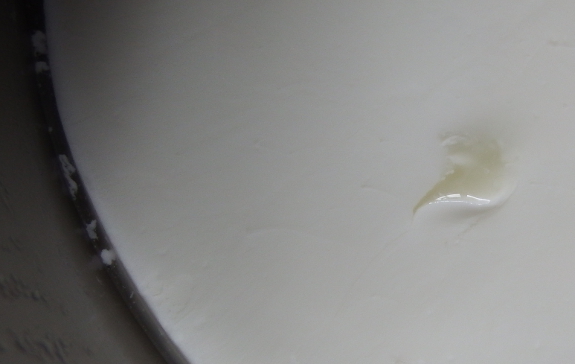
I'm not going to run
through all of the instructions for making this cheese since you can
find them at the link in the previous section. The shorthand version is:
take 2 quarts of room-temperature milk, add two tablespoons of cultured
buttermilk, dissolve two drops of liquid rennet in a quarter of a cup
of water and add to the milk mixture, stir, then cover and let sit for
about eight hours. You'll know your cheese is ready for the next step
when you see a clean break as is shown above.
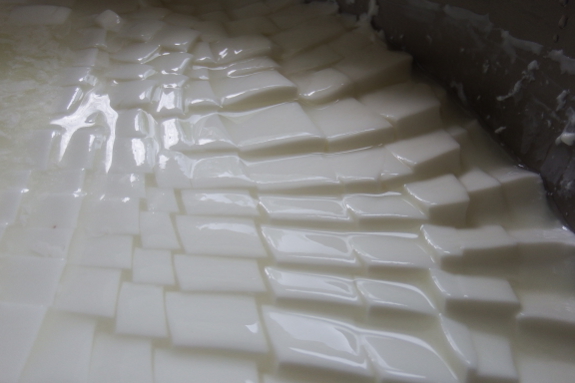
Now you're ready to cut the curds...

...and drain off the whey
by pouring the contents of your pot into a clean towel in a colander.
You're then supposed to hang this bag of proto-cheese for a while until
the rest of the whey works its way out, but I was impatient and simply
squeezed the bag, stirred the contents, and then squeezed some more
until the cheese was dry. (Someone please tell me why this method is
wrong --- it seemed to efficient!)
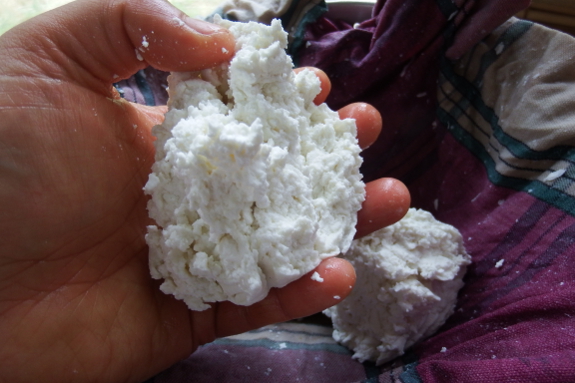
The final result gets half a teaspoon of salt mixed in and is then ready to eat!
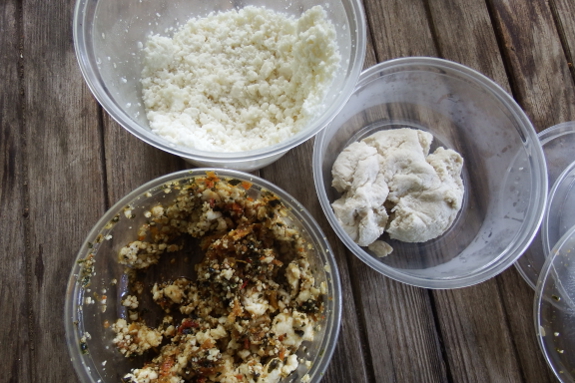
Mark and I tasted the neufchatel (top container), the same cheese mixed with some Hollywood sun-dried tomatoes,
and ricotta made from the whey. (More on the ricotta in a later post.)
Mark doesn't like goat cheese from the store, but he enjoyed this
completely non-goaty cheese...while I actually missed the goatish
overtones. Meanwhile, I've never been a fan of ricotta, but I thoroughly
enjoyed the homemade version, while finding the Neufchatel a bit bland.
As best I can tell, the
reason this cheese is neufchatel instead of chevre is because it uses
buttermilk as the starter culture. However, when I looked up the biology
of chevre and buttermilk cultures, I learned that both contain some
combination of Lactococcus lactis lactis, Lactococcus lactis cremoris, Lactococcus lactis diacetylactis, and Leuconostoc mesenteroides cremoris.
It's probably still worth buying a chevre culture to see what I come up
with using the other starter since my taste buds say this Neufchatel
isn't the same as chevre.
Want more in-depth information? Browse through our books.
Or explore more posts by date or by subject.
About us: Anna Hess and Mark Hamilton spent over a decade living self-sufficiently in the mountains of Virginia before moving north to start over from scratch in the foothills of Ohio. They've experimented with permaculture, no-till gardening, trailersteading, home-based microbusinesses and much more, writing about their adventures in both blogs and books.
Want to be notified when new comments are posted on this page? Click on the RSS button after you add a comment to subscribe to the comment feed, or simply check the box beside "email replies to me" while writing your comment.

I don't have a lot of experience making cheese, but I've noticed that the blandness can sometimes be counteracted by adding a little more salt.
I also wonder if squeezing the whey out quickly gives the bacteria less time to impart flavor to the cheese. Sort of like slow-rising breads. Or maybe if some of the whey liquid evaporates instead of draining, the flavorful whey solutes stay with the cheese? I'm definitely not up on my cheese-making theory, and where the majority of flavors are produced in non-aged cheeses.